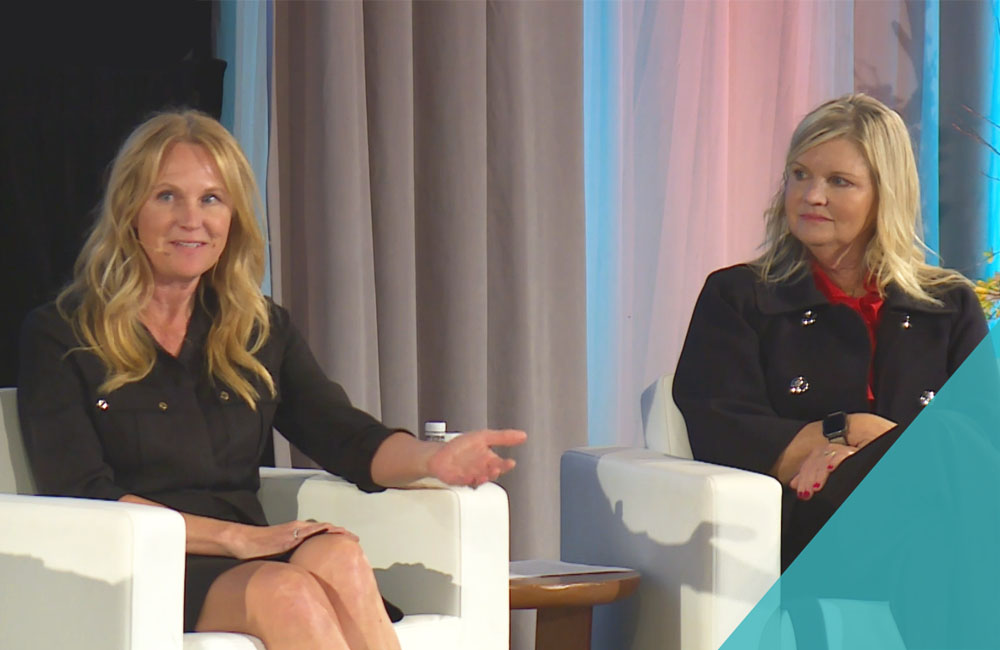
Moving Upstream in Health Care: The Role for Employers
Employers are using upstream methods to give employees access to high-value health care. This was the focus of a panel discussion hosted by The Alliance at their 2019 Annual Seminar in Madison, Wis.
Moving upstream means addressing the social and environmental conditions at the workplace, in the community or at home that cause or aggravate health conditions and drive up health costs.
The term, “moving upstream” was coined by Dr. Rishi Manchanda, a primary care physician, public health innovator and former health system executive who provided the keynote address at The Alliance 2019 Annual Seminar.
Panel Participants
Cheryl DeMars, president and CEO at The Alliance, moderated the panel which was comprised of three employers with onsite or near site clinics and one onsite clinic provider. All of the employers were members of The Alliance. The panelists had diverse interests in employer onsite clinics, direct primary care and upstream methodologies. The panel participants were:
- Natasha Plank-Ottum, CEO and owner at Plank Enterprises, a family-owned, manufacturing-oriented holding company, headquartered in Eau Claire, Wis.
- Diana Clark, benefits manager at Promega Corporation, a privately-held global biotech company, headquartered in Madison, Wis.
- Jake Nolin, human resources director at Rice Lake Weighing Systems, a family-owned global manufacturer and distributor of weight-related products and supplies, headquartered in Rice Lake, Wis.
- Traci Rothenburger, clinic manager at Nordic PrivateCare in Baraboo, Wis. This primary care clinic provider manages onsite clinics for employees, including those of Alliance members Flambeau, Inc. and Seats, Inc.
How did your company become involved in addressing the upstream needs of your employees?
- Plank-Ottum: We needed to combat the large increase in health care costs – a 168 percent increase from 2007 to 2012. [Plank Enterprises joined The Alliance in 2018.] The first thing we needed to do was bring dedicated primary care to employees. This included onsite and near-site clinics and physical therapy. We focused on injury prevention, diabetes management and bringing health care to individuals to meet their needs. We also focus on the larger goal of employee wellbeing, financial advising, grief counseling, relationship counseling and more. We try to weave the most important parts of wellness into our [workplace] culture and have some fun and laughter.
- Clark: We have a very curious [workplace] culture and a culture focused on well-being and balance. From the very beginning, our CEO recognized that we needed to support our employees in order for them to bring their whole selves to work. Over the years we have evolved to learn more about our employees’ needs and meet them where they are. For example, when we launched our Employee Caregiving Benefit in 2018, it was a leap of faith. We knew caregivers existed in our employee population, but we didn’t know how many. After we launched our caregiving benefit offering employees up to 80 hours of paid time off, employees starting coming forward. They said, “Here is my situation, here are my needs and here is the type of the support that I need.” This helped us to shape the program further in 2019, including adding grief counseling.
- Nolin: It started with a crisis in 2015 when we were faced with a 40 percent increase in health care costs. [Rice Lake Weighing Systems joined The Alliance in 2018.] We started a near site medical clinic focused on primary care, wellbeing and chronic disease management. It’s been a huge success for us. Some employees hadn’t seen a doctor in 20 years and now they can go to an appointment without added expense or time off of work. Another upstream method we’ve used is that 66 percent of our employees have participated in a two-day change management program. This has taught them that they are capable of change professionally, for their health and in their community.
- Rothenburger: I saw a need working with employers to help them lower their health care costs. That is what took me on this onsite clinic adventure – starting them, building them and making them work for employers. We directly hire the doctors, chiropractors, wellness coaches and staff. We do direct contracting with local organizations and help people navigate through the health care system. Employees love our onsite clinics. Having an onsite clinic has helped many employers with recruitment and retention of employees.
How are you addressing the behavioral health concerns of your employees using workplace initiatives?
All of the panelists agreed that they are connected to behavioral health resources, but have challenges in obtaining timely access to quality behavioral health providers. It often can take three or more weeks for a patient to get in for an initial appointment with a behavioral health professional.
Many self-funded employers have started looking for additional solutions to address this challenge of access. Some employers have added a psychologist to their onsite clinic staff. And they have made behavioral health onsite appointments free of charge to all employees. Other employers have also added mental health assessments as standard questions at all annual physicals at their onsite or near-site clinics.
Employers are finding ways to encourage an open workplace culture and promote idea sharing. This is how employers can better determine what employees really want and need in the evolution of their benefits.
“With benefits, your goal is to provide the greatest good for the greatest amount of people,” said Nolin.
What has been your largest “upstream” success?
- Plank-Ottum: There have been financial successes . . . but we’ve reduced the barriers and increased access [to health care.] Employee engagement, retention, loyalty, trust – those are the things that really matter. And those have been our biggest successes. Change can start small and over time it becomes larger.
- Clark: The combination of adding the onsite behavioral health provider and caregiver leave [to the benefits program] have defined our success within the past 12 to 24 months. We couldn’t have predicted all of our employees’ needs. However, through these programs we were able to engage employees and ask, “What is the best way to support you?”
- Nolin: We are a host business for Project SEARCH®. It is a program for young adults with physical and/or mental disabilities. With the help of a classroom teacher and a job coach, these young adults learn job skills through an internship. Many of these interns have been hired into our workforce. When you see the changes these young adults have made, it will put a smile on your face, your employees and your community. Try it.
- Rothenburger: On the clinic side, this is what I’ve seen. Increasing access to convenient, free care has encouraged employees to get care when they need it. They may not seek the care they need, otherwise. It is important to reduce the financial barriers of health care.
What advice would you like to give to employers?
- Clark: Be aware of the upstream effects and other factors that you don’t see. Give people a safe place to discuss their needs. Let’s not just look at the symptoms [of a patient] at an onsite clinic. Let’s back up and try to understand where the person is coming from. Be open to conversations, listen and ask questions.
- Nolin: All of the pieces work in concert. You need buy-in for all of the essential pieces and you need to educate staff about your benefit options so they make better choices.
- Plank-Ottum: Start with the “8 Dimensions of Wellness” and consider what can you do to enhance the lives of your employees and create a healthy workplace.
Parting Thoughts
Employers should consider actively moving upstream to positively affect the health of employees (and their families). Find the thought leaders among your employees and engage them in open conversations. Ask them about any reservations they may have. Reduce the barriers (e.g. financial, time constraints, location) to obtaining high-quality care. And encourage feedback.
“Engage in open dialogue. If someone gives feedback, negative or otherwise, ask more questions to truly understand where the person is coming from and what their concerns are. This feedback really is a gift. Because the more your employees are willing to engage in a conversation (e.g. why they are unsure about using the onsite clinic, etc.), the more you can understand what their reservations are and how you can better design and communicate your benefits plan,” said Clark.







